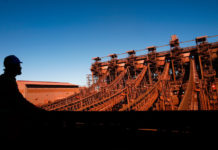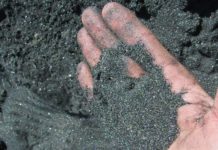
[miningmx.com] — STEELMAKER ArcelorMittal SA (Amsa) looks set to end 2011 with a bang, one way or the other.
First, the stock looks like it will be ejected from the FTSE/JSE Africa Top 40 index when the JSE meets, as it does every quarter, to rebalance the index.
The index is compiled on the basis of market capitalisation – the total number of issued shares multiplied by the value per share. But owing to certain complicated exclusions the JSE applies to duallisted shares, the likes of British American Tobacco (BAT), the JSE’s biggest stock by value, is not a constituent of the Top 40.
Until now.
Certain changes to these exclusion rules will see BAT included in the index this quarter. As Amsa was located at number 40, it’s likely to be kicked off this time. This will mean Satrix, which is mandated to buy the Top 40, will no longer follow Amsa; nor will certain index trackers.
“It’s not the hammer blow it would be in London,’ says Vestact founder, Paul Theron. Yet it’s not great news either since it means potentially fewer buyers for the share at a time when Amsa isn’t helping its own cause by losing production.
However, if Amsa executives are losing sleep, it’s more likely to be about the effects of two other factors. One is the global market for steel; the other is an upcoming judgment regarding the interminable, and deeply complex, legal dispute with Kumba Iron Ore (KIO) subsidiary, Sishen Iron Ore Company (SIOC).
Doubtless, learned legal treatises will be penned about the SIOC-Amsa dispute which, in essence, is about whether in successfully applying for a new order prospecting right on its iron ore operations, SIOC did so for Amsa as well which, owing to historical reasons, owns a share of SIOC mineral rights.
If it’s proven a licence renewed by one, is renewed for all, then an application for Amsa’s share of the KIO mineral rights by another firm, Imperial Crown Trading (ICT), will dissipate like mist on a bright spring morning. ICT is arguing that each party must apply for a licence under its own name… Complicated.
But it’s important to Amsa; crucial, in fact. That’s because if it no longer has any legal claim over a portion of SIOC’s mineral rights, then Amsa stands to lose the benefits of a cushy iron ore supply agreement, which is the subject of separate arbitration between SIOC and Amsa – now postponed until the finalisation of the court case.
As a partner in SIOC, Amsa used to buy iron ore at cost plus 3% – a ridiculously below-market price that has its origins in the bad old days when Government presided over the subsidised steel and mining monolith, Iscor.
But if Amsa isn’t “a partner’ in SIOC, if its prospecting permit wasn’t renewed when SIOC renewed its, then pop goes the subsidised iron ore supply agreement, and a slug of operating margin as well.
Of course, none of this would matter if Amsa had remembered to apply for its new-order prospecting licence over the SIOC property. But it forgot to… a fact no-one at Amsa will acknowledge.
So it all falls to Judge Raymond Zondo of the North Gauteng High Court to make the decision, set for 15 December. It should be fun, in a protracted, heavily prolix, legal kind of way.
As for the market, Amsa has steel sales turbulence ahead.
According to Goldman Sachs, the banker, global steel demand is set to grow at a lower rate in 2012 than the 8% demand growth that’s being estimated for 2011.
Added to this, input costs such as iron ore (SIOC take note) and coking coal are set to remain at elevated levels, placing further downward pressure on Amsa’s margins.
The trouble with Amsa is there’s too much noise in its system. One would love to see its lawyers’ bills because, in addition to the SIOC and ICT case, the firm has also been fighting legal cases against customers who say it continues to enjoy an export parity pricing model.
Over and above this, Amsa is exposed to put industries such as the construction sector under pressure. Then there’s its uneasy historical relationship with Government which is fuelling speculation that Government is planning a subsidised steel-producing rival it hopes will create.
– The article first appeared in Finweek. If you want to subscribe to the digital format of Finweek visit www.zinio.com.










